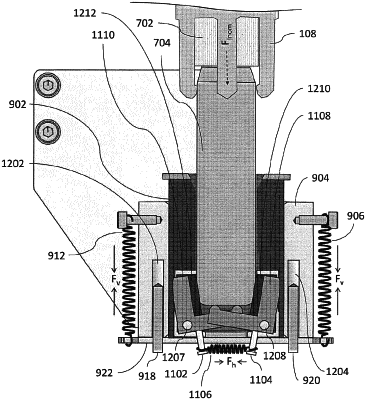| CPC B67B 3/206 (2013.01) [B67B 3/2066 (2013.01); B67B 7/182 (2013.01)] | 18 Claims |

|
1. An apparatus for mechanically constraining a container configured to accept a cap, the apparatus comprising:
an assembly comprising a block having a proximal and a distal end with a channel therein from the proximal end to the distal end, the channel adapted to receive the container from the proximal end in the block, the channel having a length such that a portion of the container that receives the cap does not enter the channel;
at least one lever positioned proximate to a distal end of the channel in the block wherein the at least one lever is pivotally attached to the block and wherein the lever has a radial portion that extends substantially radially with respect to the channel and an axial portion that extends substantially axially relative to the channel and wherein the radial and axial portions of the lever rotate with respect to an axis defined by the pivotal attachment of the lever to the block wherein the pivotal attachment defines a proximal end of the radial and axial portions of the lever and the radial portion extends from the proximal end toward a distal end opposite from the pivotal attachment and the axial portion extends from the proximal end with respect to the pivotal attachment toward a distal end opposite from the pivotal attachment and wherein the at least one lever is mechanically biased with a first biasing force such that the radial portion of the at least one lever extends inwardly and upwardly into the channel and the axial portion of the at least one lever extends upwardly and outwardly with respect to a channel axis; and
wherein, in response to a downward force exerted by the container in the channel that exceeds the mechanical bias of the at least one lever, the lever pivots at a proximal end of the radial portion and axial portions of the lever such that a distal end of the radial portion is urged downward in response to the downward force exerted on the container received by the channel and the distal end of the axial portion is urged toward the container in the channel such that the distal end of the axial portion contacts the container with a static friction force (Fs).
|